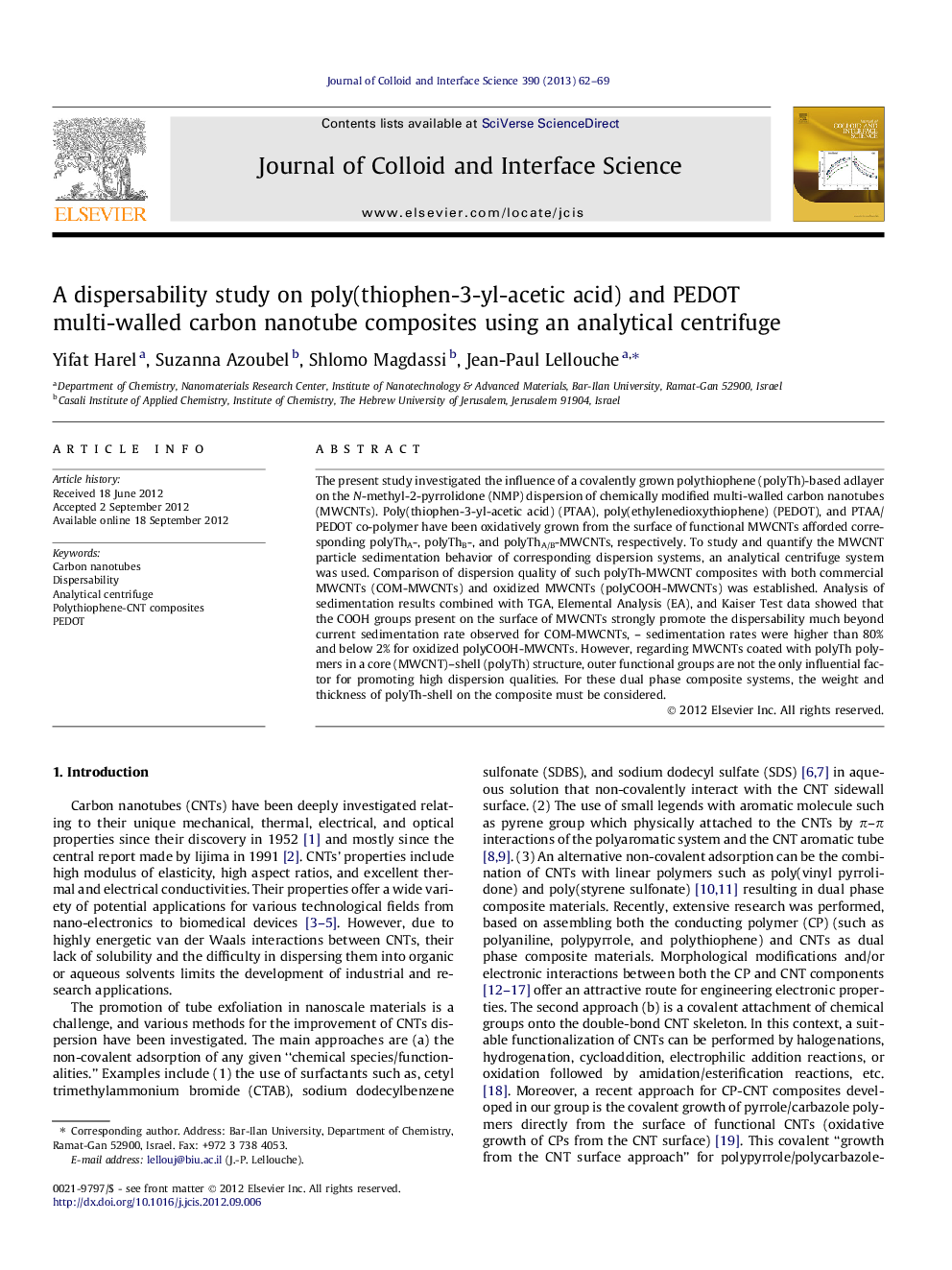| Article ID | Journal | Published Year | Pages | File Type |
|---|---|---|---|---|
| 607830 | Journal of Colloid and Interface Science | 2013 | 8 Pages |
The present study investigated the influence of a covalently grown polythiophene (polyTh)-based adlayer on the N-methyl-2-pyrrolidone (NMP) dispersion of chemically modified multi-walled carbon nanotubes (MWCNTs). Poly(thiophen-3-yl-acetic acid) (PTAA), poly(ethylenedioxythiophene) (PEDOT), and PTAA/PEDOT co-polymer have been oxidatively grown from the surface of functional MWCNTs afforded corresponding polyThA-, polyThB-, and polyThA/B-MWCNTs, respectively. To study and quantify the MWCNT particle sedimentation behavior of corresponding dispersion systems, an analytical centrifuge system was used. Comparison of dispersion quality of such polyTh-MWCNT composites with both commercial MWCNTs (COM-MWCNTs) and oxidized MWCNTs (polyCOOH-MWCNTs) was established. Analysis of sedimentation results combined with TGA, Elemental Analysis (EA), and Kaiser Test data showed that the COOH groups present on the surface of MWCNTs strongly promote the dispersability much beyond current sedimentation rate observed for COM-MWCNTs, – sedimentation rates were higher than 80% and below 2% for oxidized polyCOOH-MWCNTs. However, regarding MWCNTs coated with polyTh polymers in a core (MWCNT)–shell (polyTh) structure, outer functional groups are not the only influential factor for promoting high dispersion qualities. For these dual phase composite systems, the weight and thickness of polyTh-shell on the composite must be considered.
Graphical abstractFigure optionsDownload full-size imageDownload high-quality image (114 K)Download as PowerPoint slideHighlights► Synthesis of PEDOT- and poly(thiophen-3-yl-acetic acid) MWCNT-based composites. ► Dispersability study using an analytical centrifuge. ► Investigation of the influence of both type and amount of functional groups. ► Influence of both polyTh-shell weight and thickness on composite dispersability.
